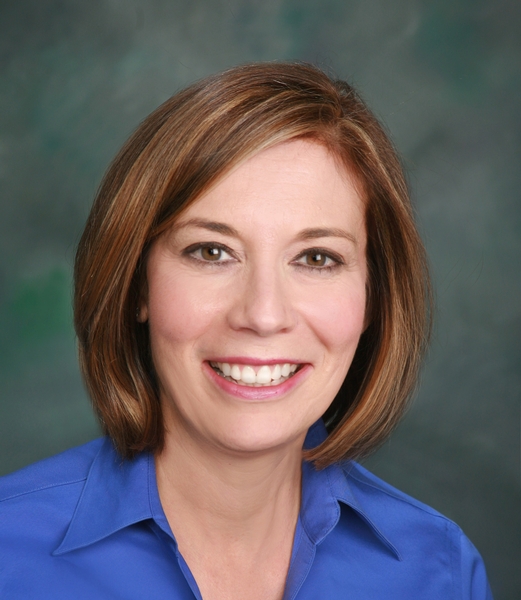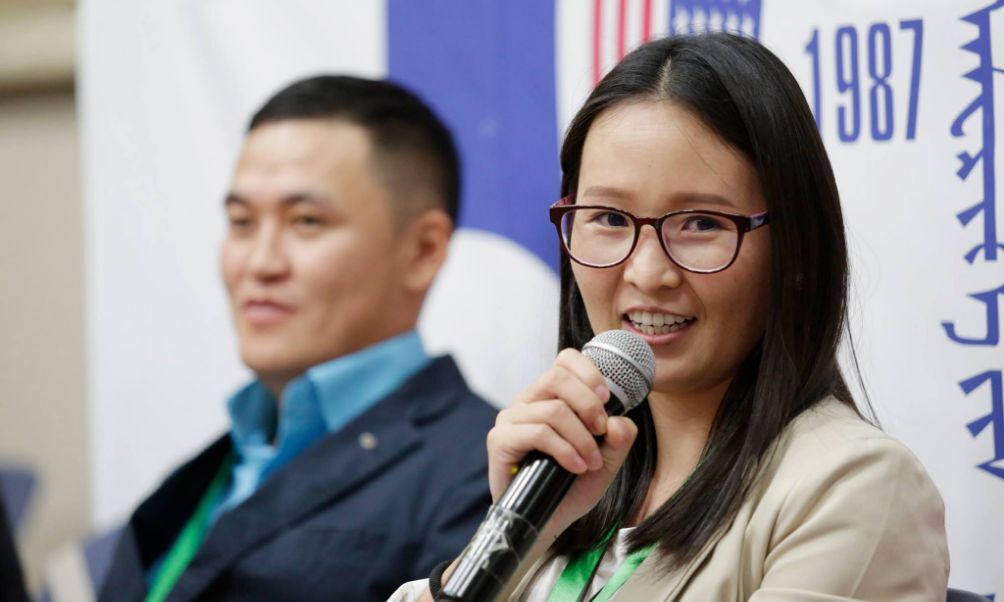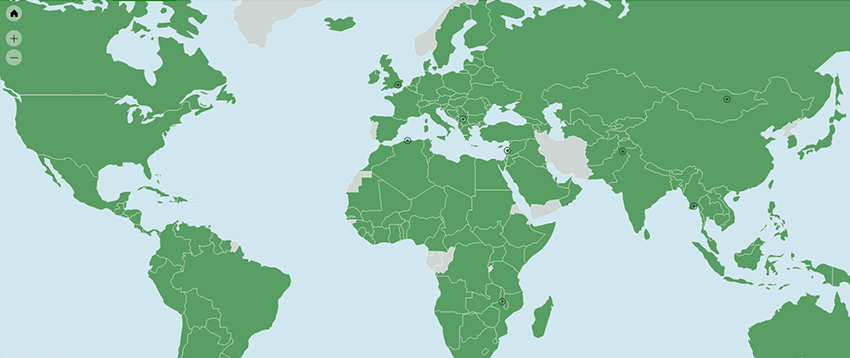-
What We Do
- WHERE WE WORK
-
About Us
 Welcome Message from Carol Jenkins
Welcome Message from Carol JenkinsFor more than 90 years, World Learning has equipped individuals and institutions to address the world’s most pressing problems. We believe that, working together with our partners, we can change this world for the better.
On my travels, I’ve had the opportunity to meet with many of those who have joined us in this mission. In Baghdad, we’ve trained more than 2,300 Iraqi youth who are already giving back at home. In London, our partners in the TAAP Initiative strongly believe that we are all responsible to practice inclusion. And in Vermont, our Experiment in International Living and School for International Training participants prove every day that they have the tools and the determination to change the world.
Please join us in our pursuit of a more peaceful and just world.
- Get Involved
Media Center > Press Room > Speech
USAID Diversity and Inclusion
Remarks Type: Remarks as Prepared
Speaker: Donald Steinberg, World Learning CEO
Speech Date: August 5, 2015
Speech Location: Washington, DC
Honored guests:
I’m pleased to participate in this first-ever Diversity Day and Summit at the U.S. Agency for International Development. Today’s topic, ““Valuing Differences and Drawing Strength from Our Diversity,” is one that drives our agenda not only as government and civil society institutions, but in our global challenge of eliminating extreme poverty and building peaceful, democratic and prosperous nations.
In my career of forty years in the world of development and diplomacy, I’ve always respected the progress that this agency has achieved in drawing on the full talents of its personnel and the fact that USAID has largely banished overt manifestations of racism, sexism, homophobia, and bias against people with disabilities. This is no small achievement, and it derives in large part from a recognition that USAID’s global mission is too important to allow discrimination on the basis of race, religion, sexual orientation, and other factors to sideline the contributions, skills, ground truth, and courage of the full population.
When I joined USAID as Deputy Administrator in 2010, taking diversity and inclusion to a new level was a key priority. Working with Barry Wells and Patricia Lamond in our Office of Civil Rights and Diversity, we organized listening sessions with individuals and affinity groups from throughout the agency, including Blacks in Government and GLIFAA. In many heart-felt conversations, I heard that USAID was indeed making progress, but that we as an agency were a little too self-congratulatory, a little too comfortable, and a little too willing to look the other way in the face of inconvenient truths about glass ceilings, discriminatory hiring and promotion practices, and other failings.
We were like a white liberal living in the Northern suburbs who condemns overt racism in the South, but bristles when someone dares to point out the racism inherent in Northern housing patterns, school districts, police profiling, criminal justice systems, and the demographics of poverty.
We have not solved these issues at USAID any more than we have in our society. As a nation, we cannot fool ourselves into believing that getting rid of the Confederate flag above statehouses is an adequate response to the murder of people in a black church, or that the challenges of homophobia disappeared because of a 5-4 vote on the Supreme Court. We still live in a country where a xenophobic presidential candidate can slander an entire nation and see his polls numbers rise.
Addressing this disconnect between our ideals and the reality became a key priority. OCRD Director Barry Wells set the parameters for my action. He reminded me that it was not enough to have good intentions: as Deputy Administrator I needed to be clear-minded, purposeful and persistent, and willing to apply the same rigorous standards of monitoring, evaluation and time-bound measurable goals to inclusion and diversity that we apply elsewhere in our work.
The result was a four-pronged approach. First, we ensured that we were using our assistance programs to empower historically disadvantaged groups. Projects to support advocacy and action groups in our target countries highlighted groups of women, people with disabilities, indigenous populations, racial and religious minorities, the LGBT community, and others. We brought in talented high-level coordinators for gender equality and women’s empowerment, disabilities, LGBT, and indigenous population.
Our efforts focused on supporting local advocates with capacity building under watch words “nothing about them without them.” I am proud now that my current organization, World Learning, has been a partner of USAID in these efforts through our capacity-building work with NGOs, the private sector and host governments in dozens of countries ranging from Myanmar to Sudan, from Ethiopia to Jamaica.
Second, we highlighted the need to mainstream and integrate the principles of inclusion and diversity in all of our programs. It isn’t enough to have our gender officers focus on these issues, we need our health, education, food security, and energy officers to prioritize these concerns just as earnestly. One important step was the requirement that every project proposal include a gender impact statement in order to be considered for funding. We needed to train our program design and implementation personnel so that it became second-nature to see, plan for, and measure the gender impact of the construction of a dam, the building of a road, the launching of an HIV prevention program, and the training of local government officials and NGO workers.
Third, USAID stepped forward as a thought-leader, spokesperson and advocate for diversity and inclusion within the U.S. government and the broader international development community. As an agency, we have learned that the case for these issues can be made on the basis of equity, fairness, legal requirements and effectiveness, and if we don’t make the arguments, it is unlikely that any other agency will.
Throughout 2012, as a result of tremendous work within the agency by staff-led working groups, USAID rolled out with great fanfare five new policy documents in the area of gender. These included strategies for gender equality and female empowerment, ending child marriage, countering trafficking in persons, preventing gender-based violence globally, and implementing the U.S. National Action Plan on women, peace and security. The fanfare reflected not only the pride that we felt in these outstanding documents, but the implicit challenge to other U.S. government agencies and other international development organizations to do the same.
Similarly, I was delighted that USAID was among the first U.S. agencies to adopt a provision discouraging our grantees and contractors from discriminating against individuals on the basis of sexual orientation and gender identity, and I was proud that we got our hands slapped occasionally for pushing the envelope in this space.
Finally, we need to walk the talk inside USAID. There must be no disconnect between our global advocacy of diversity and inclusion and our actions in-house. We must be diligent about training our staff to promote these principles; looking for unintended bias in our regulations and procedures; and examining the data on race, ethnicity, gender and other factors in our hiring, promotion, assignment, termination, and retirement processes. We must be willing to go where the data takes us, no matter how uncomfortable.
World Learning can help here. Together with the Institute for Inclusive Security, the SIT Graduate Institute here in Washington is offering a certificate program in the international policy and practice of inclusive security, beginning next summer. The program is designed for professionals working in fields related to conflict resolution, peacebuilding, sustainable development, human rights, governance and gender equality. The program highlights the role of women as active participants in shaping peace and security, and focus on developing inclusive practices for more sustainable peacebuilding, post-conflict reconstruction and conflict prevention. It is one of three certificate programs we will offer, along with monitoring and evaluation, and social innovation and entrepreneurship.
Walking the talk also means creating as safe a space as possible to discuss these issues. We are all still learning how to interact in this arena, and we need to cut each other some slack. We must be willing to stretch the envelope, and we shouldn’t have to apologize for being angry. As Deputy Administrator, there were many occasions where someone would come up to me and say, “Don, I was disturbed by something you said at the Town Hall meeting the other day.” And my response was always the same: “Thanks for raising this with me directly. I’m sorry if I offended you. Can you explain to me what I did wrong?” And that was the launch for some of the most important conversations I had at USAID.
Hopefully, we will have many of those same conversations today. Thanks again for organizing this program and including me in the discussion.





